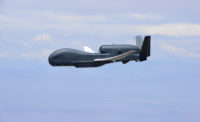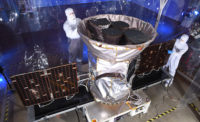DULLES, VA—Airbus and Northrop Grumman Corp are partnering to develop next-generation composite manufacturing technology. The three-year Wing of Tomorrow program will explore complex composite wing stiffener forming automation and out-of-autoclave material systems.
“This relationship positions Northrop Grumman for future potential high-rate production opportunities,” says Wendy Williams, vice president and general manager of aerospace structures at Northrop Grumman. “Our work with Airbus is an important component of growth in the commercial aerospace structures business.”
Northrop Grumman is currently producing composite fuselage stringers and frames for the Airbus A350 XWB-900 and -1000 variants at its state-of-the-art Aircraft Commercial Center of Excellence facility in Clearfield, UT. The company has successfully delivered more than 200,000 Airbus A350 parts since the inception of the program.
“[Our] proprietary automated stiffener forming process has been instrumental in the development and manufacture of high-rate production composite stringers and frames that are extremely high quality, affordable and dimensionally precise,” claims Williams. “This technology will be evolved to the new material systems, geometries and processing needs of the future, while maintaining the superior benefits of a highly automated production process.”
The Airbus Wing of Tomorrow program will address future aircraft production rates and the requirement for wings to be made faster and more affordably. The program will explore the best materials, manufacturing and assembly techniques, as well as new technologies in aerodynamics and wing architecture.
“New material experimentation represents a major part of the program, and lower-cost composite technologies currently being pursued could enable wing components to be produced with significantly reduced equipment and tooling costs,” says Williams. “[That would enable] a faster production cycle. Increased use of composite materials also opens up new possibilities in terms of wing configuration and construction.”



